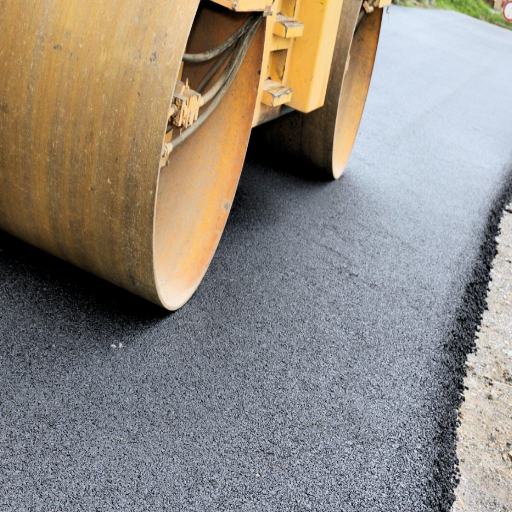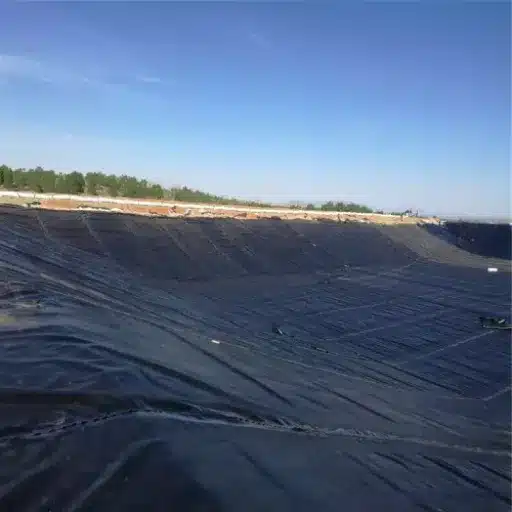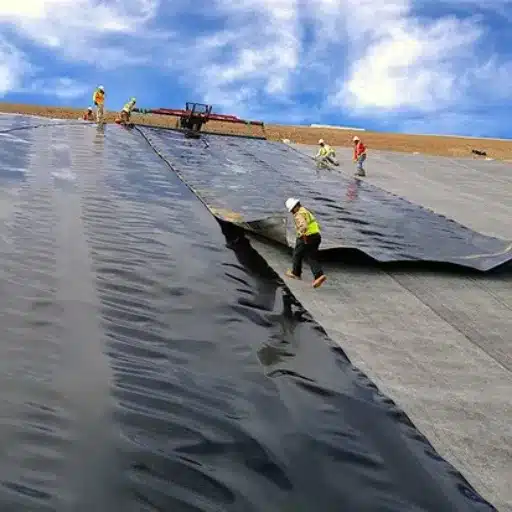How to protect asphalt from excavator tracks? Protecting various surfaces, including asphalt, is paramount for road construction and heavy equipment use. Moving heavy machinery involves different products such as bulldozers, excavators, and tractors, which threaten the asphalt as they can destroy it with their painted tracks. As a result, construction projects face undue expenses due to repairs.
However, with the introduction of rubber track pads, this problem has been eradicated. As this solution is rebuildable parts, it is feasible to increase the durability of road surfaces without affecting the performance of earthmoving equipment and draglines. In this post, we will cover how to use tire pads, whether they help alleviate the compaction of soils, and how best to handle them in all your virtual and practical projects, so you do not lose focus. How to protect asphalt without destroying the equipment can be learnt by continuing to read.
What are the Benefits of Using Rubber Track Pads for Excavators?

Depending on the nature of the construction process, excavators may work on a paved (e.g., asphalt) or even more delicate (e.g., tennis court) surface. In such cases, the benefits of rubber track pads are indisputable:
- One of the primary advantages of rubber track pads is the protection they provide for delicate surfaces such as asphalt or even concrete. Metal tracks could scratch, crack, or even make gouge lines, wiping off all the delicate surface chemicals, or even take a complete part of the surface. Rubber track pads act as a shield that covers the metal track, thereby preventing it from coming into contact with the surface.
- Increased Traction: The dust is not only efficient but also increases the vehicle’s capabilities, as the vehicle is very stable in this position, minimizing the chances of slippage and smoothing rough terrain.
- Noise Reduction: Rubber track pads help reduce the noise created during the construction vehicle’s operation by replacing the metal-derived track furrows with rubber. Rubber has a high insulating property that does not transmit sound, making workplaces both quiet and user-friendly.
- Equipment Longevity: The use of rubber track pads eliminates the wear encountered on the excavator’s steel tracks, thereby increasing the machinery’s life span and minimizing future maintenance costs.
- Rubber track pads are extremely adaptive and capable of fitting into a very wide range of excavators and uses. They are also easy to put on and take off, making them simple to use in different types of projects.
Understanding the Advantages of Rubber Track Pads
On the other hand, rubber tracks have been described as a solution that allows the excavation process to proceed adequately even on slippery ground. In other words, there is an understanding that these products are suitable for luxury vehicles. Responses to search queries show that the most asked questions by web users revolve around incorporating rubber track pads in any surrounding.
The rubber track pads are particularly suitable for working in cities as they prevent severe damages on materials such as surfaces cemented or asphalted, still the productivity in complex soils is also verily good. In addition, functional noise-cancelling capabilities are noted as the equipment is erected, and even more so with advanced technology, such as in cities where quiet operation is essential. This adaptability makes rubber track pads a key choice as they meet our clients’ expectations in terms of performance and flexibility in different environments.
How Rubber Track Pads Provide Surface Protection
Rubber track pads are a type of construction equipment that covers the machine’s body, making it insensitive to elevated floors and ground. They solve the contact problem that would lead to damages in the form of abrasion, scuff mark, deformation, and or contour of thin floors under such conditions.
Their superior quality rubber content allows a more comfortable feeling as the body load is spread over the entire width of the machine, lowering the chances of the materials developing cracks or the surface being deformed. These rubber skins are also highly dynamic in such a way that they offer protection, and when running through different weather conditions. This feature has made them a preferred option for protecting the functionality and beauty of the workplace in modern society.
Comparing Rubber Track Pads with Steel Tracks
Flexible rubber access and pads offer convenience and tread protection for surface access and operation, whereas rigid steel tracks assure longevity, adhesion, and sturdiness.
| Parameter | Rubber Tracks | Steel Tracks |
|---|---|---|
| Durability | Moderate | High |
| Traction | Moderate | Excellent |
| Surface Impact | Low | High |
| Noise | Low | High |
| Comfort | High | Low |
| Cost | Lower upfront | Higher upfront |
| Maintenance | Moderate | High |
| Weight | Light | Heavy |
| Terrain Suitability | Soft/Urban | Rough/Harsh |
| Repairability | Difficult | Easier |
What Types of Rubber Track Pads are Available for Excavators?

There are a total of 3 classifications of rubber track paddings intended for excavators:
- A characteristic of these Best-On Pads is that they attach by a bolt to the steel track, making a perfect junction. Because of how they attach to a vehicle, they are also suitable whenever the state of the tracks changes.
- Bolts do not fasten this type of matting, but rather by clips on the side of the steel track. It usually takes a small fraction of an hour to attach or disassemble and is, therefore, best used as an interim vehicle cover or when operators have to change from rubber to steel pads nearly every time.
- These are amongst the roadrunners and are comparatively in short supply, if any, due to the molded rubber used in the track instead of the steel shoes they must use. Due to its robust and aesthetic appearance, it is more utilized in long-term projects.
Each rubber track shoe has analogous benefits and appears to satisfy particular operating requirements more efficiently.
Different Types of Rubber Track Styles
Block, C-Lug, V, Zig-Zag, Straight-Bar, Multi-Bar, and Turf patterns are available for rubber tracks serving various terrains and purposes.
| Style | Key Feature | Best Use | Self-Cleaning | Traction | Surface Impact |
|---|---|---|---|---|---|
| Block | General-purpose | Asphalt, Mud | Moderate | High | Low |
| C-Lug | Multi-purpose | Snow, Clay | Moderate | High | Low |
| V | Directional | Agriculture | Low | Moderate | Low |
| Zig-Zag | High grip | Mud, Snow | High | High | Moderate |
| Straight-Bar | Aggressive | Mud, Snow | High | Very High | High |
| Multi-Bar | Versatile | Mixed terrains | Moderate | High | Low |
| Turf | Gentle on grass | Delicate areas | Low | Low | Very Low |
High-Quality Rubber Options for Excavators
Although high-quality rubber guarantees the best durability, many aspects should come into play. Upper rubber tracks with the most wear and tear, ripped tendencies, and environmental challenges are chosen because they have good differences in their rates of degradation. The production of such implements applies technology that makes them strong and thus less likely to break, making them more efficient.
New rubber versions have grown quite a code of conduct with the primary goal of urban infrastructure works that implement these measures as they seek to limit the loud or ringing environments for the material. In addition, other manufacturers also provide state-of-the-art green rubber options that utilize recycled components; however, they do not outfit customer applications with a cheaper, less efficient product. The cost-benefit analysis will therefore help determine the benefits and the probability of maintenance costs associated with each rubber selected for a given operation after a period that tends to be only a few days.
How Can You Maintain Rubber Track Pads for Longevity?

If you want to extend the lifespan of rubber track pads, make a regular habit of inspecting and cleaning them. Remember to shake out and nip any residual soil, particles, or contaminants in the bud after each use. Two, always be on the lookout for any visible imperfections, such as fractures or breaks in the pads, which should be fixed before they worsen.
In addition, it is essential to retain the tracks, as closely or widely spaced tracks can cause more work input and stress, and decrease the working life of the equipment. It is essential to ensure that the machines are kept in dry housing and protected from the sun and other severe environmental conditions to avoid unnecessary wear or exposure of the pads. Finally, all manufacturers’ tirings must be conducted as per the manual, and any worn pads cannot be reused and must be replaced.
Essential Maintenance Tips for Rubber Track Pads
- Regular Maintenance
The rubber track pads should be cleaned regularly to remove dirt, debris, or chemicals that cause wear. A wand with a pressure nozzle is recommended for track cleaning, as it allows the rubber to be washed without damaging the material.
- Check For Wear and Tear
Checking the excavator’s track shoes for small cracks, splits, or unusual wear patterns is also recommended. If any abnormalities are found, they should be rectified immediately, as this is the only sure way to stop the tracks from further wearing out and finally breaking off.
- Check the Tension of the Tracks
It is essential always to check the track tension and loosen it whenever too much force is exerted on it. A very loose or tight track will result in premature wear and cause more force due to more contact with the rubber pads and the machine.
- Keeping in the Right Place
One of the best practices for maintaining equipment is keeping it under shelter in a well-aerated and cool place, free from direct sunlight and other extreme heat. Keeping it for a long time in the open air in humid and hot weather will rot and destroy its tensile strength.
- Obey the Rules
Be sure to follow all the rules, especially those that involve changing the pads after specific mileages. Adequately using original spare parts and using them as per instructions will guarantee the equipment’s peak performance and long life.
Signs that Your Rubber Track Pads Need Replacement
- Abrasion, Tearing, and Rupture
Rubber pads can develop noticeable wear over time, including cracks and tears. Numerous factors may cause these damages, including normal use, very harsh conditions, and/or high temperature changes. Cracks are an especially bad indicator as they suggest the pads may not be functioning as they should, e.g., providing an adequate traction level.
- Decrease in Adhesion Quality
Vehicles equipped with rubber track pads can lose grip and slip down old tracks that used to perform well; this is a sure sign that the rubber has diminished and will not perform as required.
- Excessive Wear or any Form of Distortion
Observe for any sticking pad, poor, or excessive wear in specific areas of the pad. Such aspects might affect an operator’s safety, and hence, new pads need to be fitted in a timely fashion.
- Detached Element: Metal Bottom Exposed
In addition, in severe cases, when the rubber has already worn out to the last layer so that the metal bottom is visible, it will continue to wear out. This will, in turn, harm the equipment and the surfaces on which it is operational.
- Any Odd Noises or Vibrations
When vibrations, screeching, or any other sounds increase extensively during machine operation, it indicates the cushioning performance’s failure within the rubber compounds. This might lead to further machine deformation during equipment operation.
- Frequent loosening of properly fixed covers
The last indication of warping or deterioration is when the mat becomes too slack and cannot hold on to the track properly, which means it needs to be discarded. Sach wear elimination is essential in both safe and practical applications.
Therefore, in case you notice any of these signs, your rubber track pants need repairs to prevent further damage and enhance their usage. When the worn-out parts are replaced in a timely manner, the equipment will run smoothly with minimal machine rest time.
Maximizing the Service Life of Your Excavator Tracks
For your excavator tracks to be used as long as possible and continue working correctly, it is crucial to instill a proactive maintenance behavior. The first step is to account for the visual inspection of the tracks daily, checking for any indications of wear, damage, or dirt accumulation on the tracks. Keeping the tracks free from dirt, stones, or other substances is of utmost importance since all these substances considerably shorten the life of the track. It is also essential to check whether the tracks are too tight or must be applied with less force. This way, even if the excavator is overspeeded, the remaining lifespan will not be affected by any unnecessary issues.
Different styles of operation are significant as well. Do not make sharp turns or go too far around a circle—do not skid your machine, as this will cause uneven wear and tear. If the machine is traveling in very rough or abrasive terrains, it is essential to reduce travel distance and minimize the impact on the machine. And again, remember that it is always better, where applicable, to change the position of the tracks’ schedule and distribute the work (hours) evenly to reduce wear.
Indeed, the way the machine is stored is essential. Where the excavator is not to be used, it should be parked in a clean and relatively dry space to avoid exposing the tracks to extreme weather and dampness, which would cause corrosion. Adherence to the practice ensures its upkeep and successful use for years of performance, which will be proven cost-wise and operation-wise in the long run.
What Should You Know About Heavy Machinery and Asphalt Protection?

Heavy machinery can take a toll on an asphalt surface if it is not well-maintained. Large and heavy equipment can create potholes, cracks, ruts, or even destroy the pavement from the weight and motion over time. If you want to use asphalt for protection, think about putting protection mats or pads under construction equipment, as it would spread the load. All equipment must be maintained adequately to curb and prevent fluid leakages since oil or hydraulic fluids have destructive effects on asphalt. Also, the road should be safe and resistant to the loads carried by the equipment limits.
Furthermore, it is also crucial to carry out regular Asphalting inspections and mending can help protect the tarmac’s surface and prevent any possible damage, such as cracking and so much more, from occurring. Over time, practices such as this will increase the need for road maintenance rather than road reconstruction, which is very expensive. By taking these steps with other sessions using the most detailed measures you can think of, such as protective coatings, the life cycle of a row of asphalts will be enhanced, and the money spent on its upgrading and repair will be minimal.
The Role of Excavators in Heavy Construction
Excavators are sturdy machines working in the technical large-scale construction processes that require them to possess characteristics that benefit them in versatility and speed. They are usually found at work solely for the excavating function. They are also used for trenching, building foundations and basements, handling materials, demolishing structures, and grading or shaping the site.
Improvement in the technical application of the machine, through modern application of technologies, has allowed the excavation works to be more concise, faster, and accurate. So, depending on the scope and other conditions of the construction works, different excavator attachments like buckets, hammers, or grapples can be alternatively fitted. And because they can soil themselves nearly every time they are used in the project and carry weighty material, it is an omission for all modern construction projects to miss their presence.
How Excavator Tracks Impact Asphalt Surfaces
When heavy construction machinery and equipment like road roller trucks must be operated in closed quarters, it is necessary to install those black mats to protect the flooring from severe damage. Mats such as rubber chutes, flooring mats, and other similar items are suggested to ensure the equipment’s safe operating environment. … such projects as resurfacing a pavement also require tools like these black rubber mats and similar mats … This will prevent the floors from deterioration due to the construction operations using the pavement. Street matting is an excellent way of wrapping up a street surface to work on it.
Best Practices for Using Heavy Equipment on Asphalt
Construction of any kind and heavy equipment operation can affect the life and quality of an asphalt surface, so it is of the utmost importance to exercise caution. Below are a few of the best practices to adhere to.
- Do not Overload One Side of the asphalt.t
When heavy equipment operates, the machine’s weight directly affects the asphalt surfaces’ useful life. Use track mats, plywood sheets, or anything that will help to spread the weight evenly on the machinery and the pavement, in turn reducing the pressure on the asphalt.
- Do Not Overturn in Filled asphalt Paver or Parking lot
Excessive turning in filled asphalt pavers or parking complaints will likely damage the asphalt quickly. Regularly operate the equipment with little to no sudden jerks or movements to avoid damaging the surface.
- Check the Temperature of the Asphalt
Asphalt is very resistant to deformation at high temperatures. On asphalt that has already been laid or that has been heated, there should be a time gap where no motion is allowed to prevent unnecessary displacements, especially when the equipment moves.
- Carry Out Maintenance on the Equipment in Due Time
Oil spills, ruptured hydraulic lines, or agricultural tyre bursting can occur due to equipment failing to be serviced, which destroys the asphalt. Any machinery should be checked before being used on any asphalt area.
- Do Not Reach the Maximum Loading Capacity
Operating equipment over the design specification will increase pressure on aged/weak asphalt surfaces. Take care not to cross the limit, loading the pavement above what it can accommodate without the cracks or the wheel making an impression.
If such preventative measures are observed, the decline in the condition of the asphalt can be significantly reduced and its duration increased, considering that such practices are beneficial.
Reference Sources
- Laboratory Experimental of Ballast–Bituminous–Latex–Roving (Ballbilar) Layer for Conventional Rail Track Structure
- Authors: D. Setiawan et al.
- Published: January 1, 2024
- Summary: This study investigates using a composite layer made from ballast, bituminous material, latex, and roving fiber to enhance the performance of railway track structures. The research highlights how adding these materials can improve the compressive strength and durability of the track structure, which can be relevant for understanding how similar materials might protect asphalt surfaces from the stresses imposed by heavy equipment like excavators.
- Methodology: The authors conducted pressure tests and sieve analysis to evaluate the composite layer’s abrasion resistance and compressive strength, comparing different formulations to determine the most effective mix.
- A Review of Different Aspects of Applying Asphalt and Bituminous Mixes under a Railway Track
- Authors: K. Jadidi et al.
- Published: December 31, 2020
- Summary: This review discusses the application of asphalt and bituminous mixes in railway tracks, emphasizing their benefits in improving structural performance and reducing settlement under heavy loads. The findings suggest that similar principles could be applied to protect asphalt surfaces from the impact of excavator tracks by using appropriate asphalt formulations and construction techniques.
- Methodology: The review synthesizes findings from various studies, providing insights into the design and construction standards for asphalt applications in heavy-load scenarios.
- Quantification of the Tyre-Track Resistance of Coloured Asphalt Mixtures
- Authors: Rong Luo et al.
- Published: July 4, 2017 (not within the last 5 years but relevant)
- Summary: This study quantifies the resistance of colored asphalt mixtures to tire tracks, which can be relevant for understanding how to protect asphalt surfaces from damage caused by heavy machinery like excavators. The findings indicate that the composition of asphalt mixtures significantly affects their resistance to deformation under load.
- Methodology: The study involved laboratory testing of various asphalt mixtures to measure their resistance to tire tracks, providing insights into how different formulations can enhance durability.
- Top Ground Protection Mats Suppliers in China
Frequently Asked Questions (FAQs)
Q: What are excavator track pads, and why are they important?
A: Excavator track pads are components that attach to the track chain of excavators and heavy machinery. They protect delicate surfaces and prevent damage to steel tracks during operation.
Q: What are the benefits of rubber track pads over steel track shoes?
A: Rubber track pads offer reduced noise, less ground disturbance, and improved traction on sensitive surfaces. They help protect delicate areas such as asphalt milling sites and landscaped environments.
Q: What types of track pads are available for mini excavators?
A: Several types of track pads are available for mini excavators, including clip-on rubber pads, bolt-on track pads, and chain-on track pads. Each type has a unique installation method and application benefits.
Q: How do I install rubber track pads on my excavator?
A: Rubber track pad installation typically involves removing the existing steel track shoe and attaching the new pads using bolts or clips, depending on the type of track pad. Proper alignment and torque specifications should be followed for secure installation.
Q: What maintenance is required for rubber track pads?
A: Rubber track pad maintenance includes regular inspections for wear and tear, cleaning to remove debris, and ensuring proper tension. Keeping them in good condition will extend their lifespan and performance.
Q: Can I use rubber track pads on heavy construction machines?
A: Rubber track pads can be used on various heavy construction machines, including excavators and track loaders. However, they must be compatible with the machine’s existing steel track and track system.
Q: What should I know about rubber track pads before purchasing?
A: When considering rubber track pads, it’s essential to know about rubber track pad styles, the benefits of rubber tracks, and your machine’s specifications. Look for high-quality rubber pads to ensure durability and performance.
Q: How do clip-on rubber pads differ from bolt-on rubber pads?
A: Clip-on rubber pads are designed to attach easily without bolts, making installation faster and simpler. Bolt-on rubber pads require bolts for a more secure attachment, which can be beneficial for heavy-duty applications.
Q: What are the advantages of using premium rubber track pads?
A: Premium rubber track pads offer enhanced durability, better traction, and improved resistance to wear and tear compared to standard options. They are ideal for applications where heavy use and surface protection are crucial.






